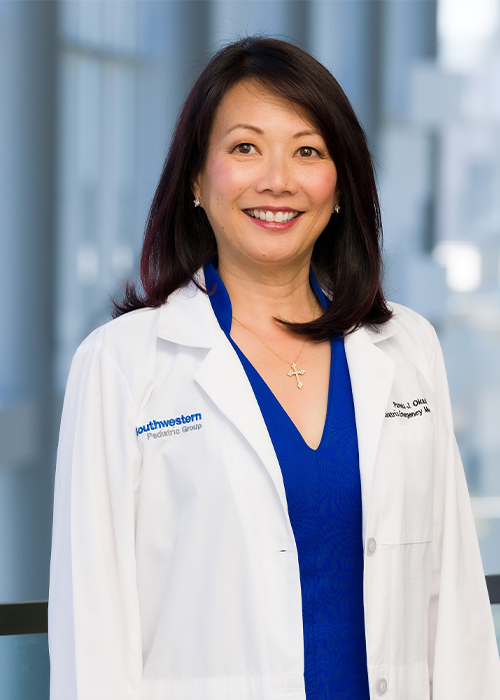National study in children, adults weighs effectiveness of three anti-seizure drugs

DALLAS – Aug. 31, 2020 – Three anticonvulsant drugs commonly used to stop prolonged, potentially deadly seizures each work equally well, according to a national study involving physicians at UT Southwestern. The results provide reassurance to patients who may have drug allergies and to physicians and hospitals that may not have supplies of all three.
The report, published last year in The New England Journal of Medicine, included large numbers of children. Combined with a follow-up study published in April in The Lancet, it also provides important information on how well these drugs work in children, a group for which little testing had been done, says Pamela Okada, M.D., professor of pediatrics at UT Southwestern and a principal investigator in the NEJM study, which was conducted in 57 emergency rooms across the country.

None of the drugs used to end the treatment-resistant seizures, called status epilepticus, is approved by the FDA for use in children, although physicians desperate to stop a long-running seizure give them off-label, says Okada. The studies provide reassurance that the drugs are beneficial, she says.
Status epilepticus seizures are defined as those lasting more than five minutes or involving more than one seizure with no recovery in between. Such seizures can be triggered by epilepsy, a high fever, alcohol or drug withdrawal, or other causes. They are believed to affect as many as 1 in 2,500 people in the U.S. each year, according to Okada, and can result in brain damage, life-threatening cardiac arrhythmias, or even death as the patient’s ability to breathe is impaired.
Typically, the seizures have continued despite a first-line treatment with a benzodiazepine such as Valium or Ativan.
To stop the seizures, emergency room physicians use one of three drugs: levetiracetam, valproate, or fosphenytoin, although only the last of those has been approved by the FDA for this indication, and only for adults.
The goal of the NEJM study was to find out which of the drugs was best at safely ending seizures and improving the level of consciousness within 60 minutes of infusion.
The study examined 384 emergency room patients (39 percent of whom were children aged 2 to 17) from 2015 to 2017. The study ended after researchers concluded they were unlikely to find a difference in effectiveness.
“The three drugs all work similarly in this scenario for both children and adults,” says Okada. Each drug stopped the seizures within 60 minutes for roughly half the patients who received it.
While the NEJM study did not find a difference in safety, the Lancet study did show more children given fosphenytoin required endotracheal intubation, or the insertion of a tube to assist with breathing.
Research for this study was also conducted at the University of Virginia; the Montefiore Medical Center, Albert Einstein College of Medicine, in New York; and the University of California, San Francisco; among others.
About UT Southwestern Medical Center
UT Southwestern, one of the premier academic medical centers in the nation, integrates pioneering biomedical research with exceptional clinical care and education. The institution’s faculty has received six Nobel Prizes, and includes 23 members of the National Academy of Sciences, 16 members of the National Academy of Medicine, and 13 Howard Hughes Medical Institute Investigators. The full-time faculty of more than 2,500 is responsible for groundbreaking medical advances and is committed to translating science-driven research quickly to new clinical treatments. UT Southwestern physicians provide care in about 80 specialties to more than 105,000 hospitalized patients, nearly 370,000 emergency room cases, and oversee approximately 3 million outpatient visits a year.
